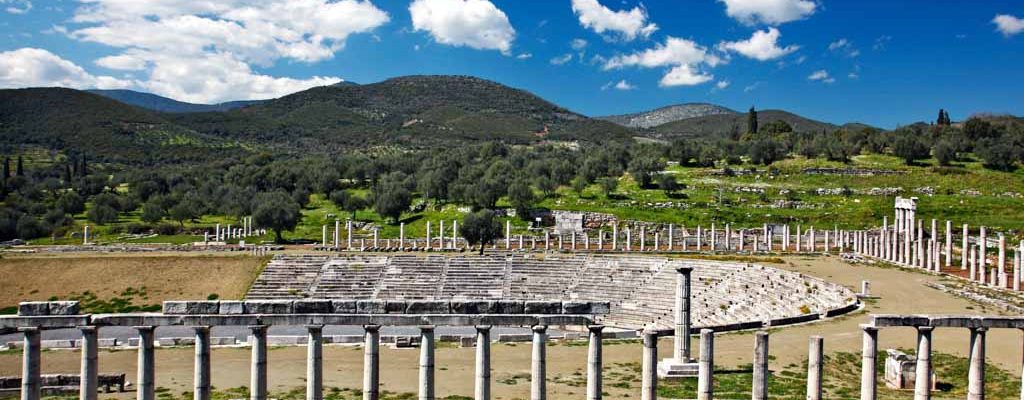One of the pleasures of a Greek holiday is that there is always an opportunity to enrich your knowledge of archaeology and deepen your relationship with history in a meaningful way. So often, this connection happens in a place it is less expected. Many are familiar with the high-profile archaeological treasures of Greece, such as Knossos and the Parthenon. But there are also many well-known destinations in Greece that have lesser-known ancient sites of great interest, all the more enjoyable for being surprising.
Akrotiri, Santorini

Santorini is famous for many things – the sunsets over the caldera, the magic of Thira town on its soaring cliff, its wonderful beaches, and its magnificent wines and local cuisine. But Santorini is also the location of a fascinating archaeological site – Akrotiri.
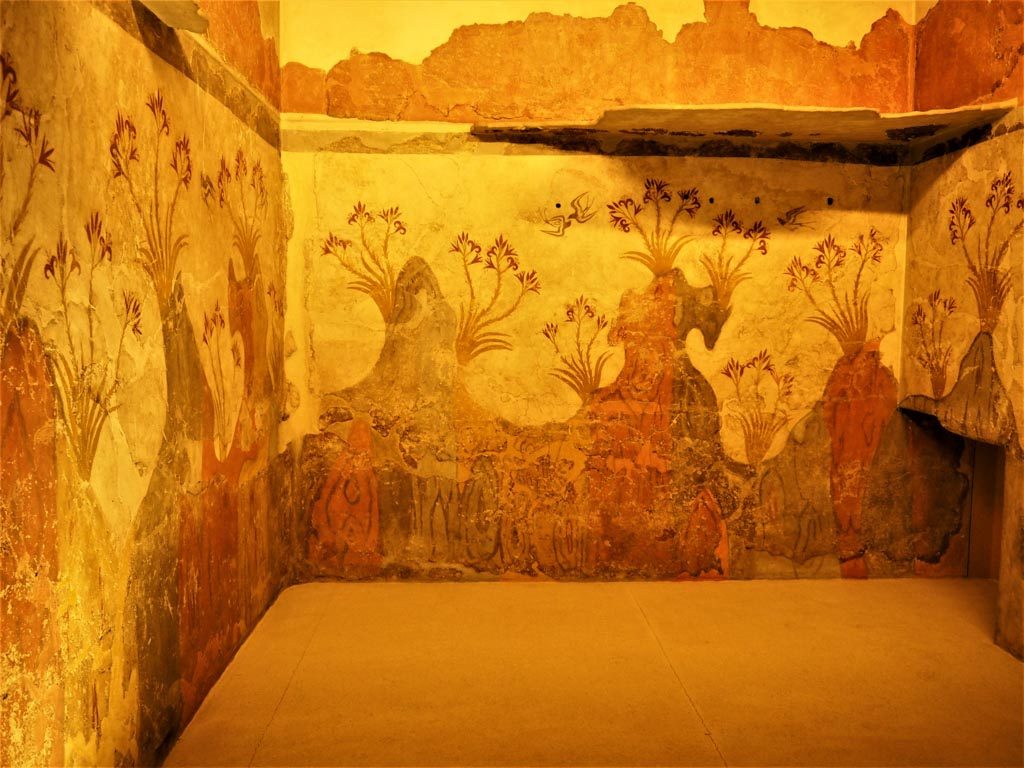
Akrotiri, in the southwest of Santorini, was one of the most significant prehistoric settlements of the Aegean. It was inhabited from the late Neolithic era. But by the Bronze Age, Akrotiri was home to a flourishing civilization, one of the most significant and prosperous ports of the Aegean. Before coming to an abrupt and dramatic end due to the volcanic eruption in the 16th century BC, this advanced society enjoyed an elegant life in their multi-storied dwellings (complete with plumbing), beautiful frescoes on the walls.
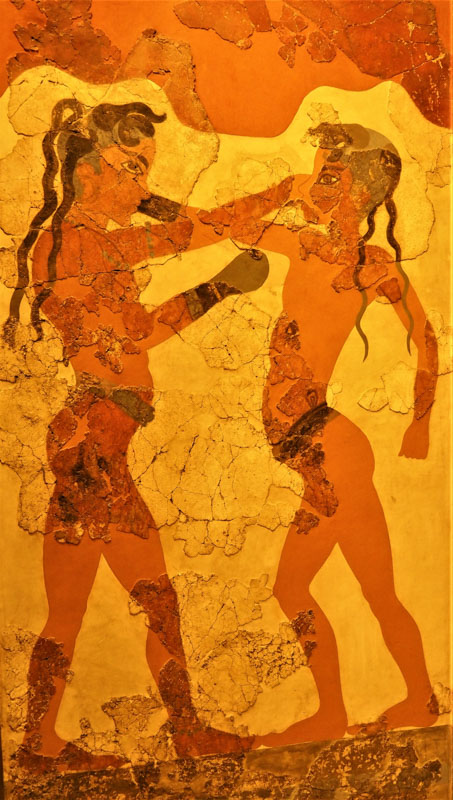
You can see the frescoes themselves in the National Archaeological Museum of Athens – marvel at the high style of the elaborately coiffed women of Akrotiri, dressed in their finery, complete with jewelry and dramatic make-up.
Eleutherna, Crete
Crete is another of Greece’s most popular and well-known destinations. The glorious beaches, the enchanting Venetian towns, the rugged mountains, and the glorious gorges all compete for the attention of the visitor. Fans of archaeology are of course also familiar with Crete, home to the Minoans, Crete’s advanced Bronze-Age civilization. The glory of the Minoans is beautifully preserved at Knossos, the main palace of the Minoans (of four on the island) that was so enthusiastically restored by Sir Arthur Evans at the beginning of the previous century.
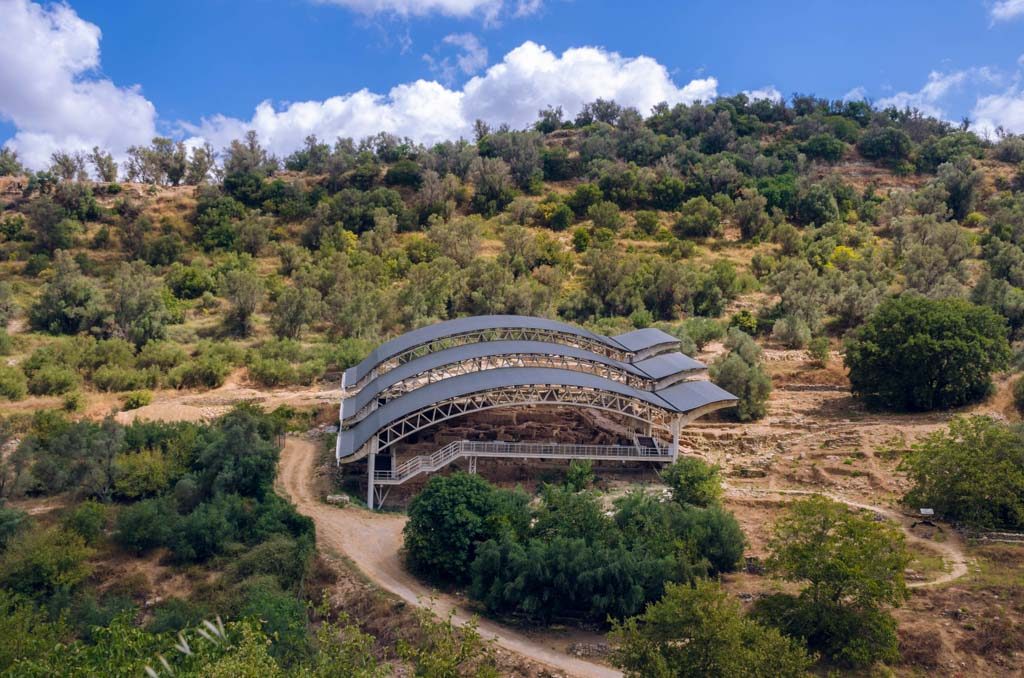
Eleutherna is one of Crete’s lesser-known archaeological sites, but it is a fascinating one. It is lesser known or one thing as it’s relatively “new” – systematic excavations only began in 1985, and the Archaeological Museum of Eleutherna opened in 2016. What makes Eleutherna particularly interesting is the fact that this site was inhabited for centuries, and therefore one has an overview of various eras and civilizations. Eleutherna was first settled by the Dorians during the Geometric period (9th century BC, the late Greek Dark Ages). The site was strategic, on its steep, naturally fortified ridge, and located between Kydonia (today’s Chania) and Knossos (near Heraklion). The Roman conquest of Crete in the 1st century BC brought an era of prosperity and elegance to ancient Eleutherna. Life centered around grand public baths and other buildings and in luxurious private villas. After over three centuries, Eleutherna prospered, until a devastating earthquake in 365 CE. But even afterwards, the city continued to be a center of importance. A great Basilica was constructed in the middle of the 7th century. Another earthquake at the end of the 8th century, and subsequent Arab rule in Crete finally saw Eleutherna’s decline.
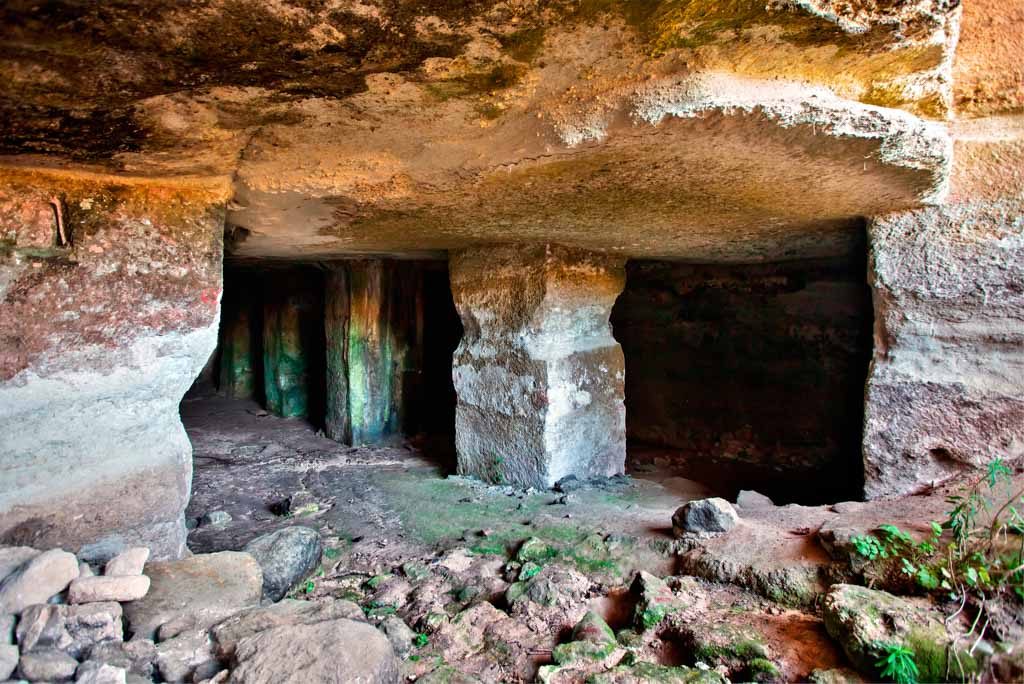
In the museum of ancient Eleutherna, a whole section is devoted to the findings of the Orthi Petra – the necropolis – where the burial customs of Homeric Greece such as in the Iliad are described, and magnificent treasures such as jewelry are displayed.
Ancient Messene, Peloponnese
The Peloponnese is a top destination for lovers of culture, archaeology, and natural splendor. The glorious and storied Mani peninsula with its brave inhabitants, the famous beaches, beautiful Nafplion – the first capital of Modern Greece – with its Palamidi fortress, and of course some of the glories of ancient Greece, including the Asklepion and theater of Epidaurus, ancient Olympia, and Mycenae, are just some of many sites and experiences vying for the attention of the cultured traveler.
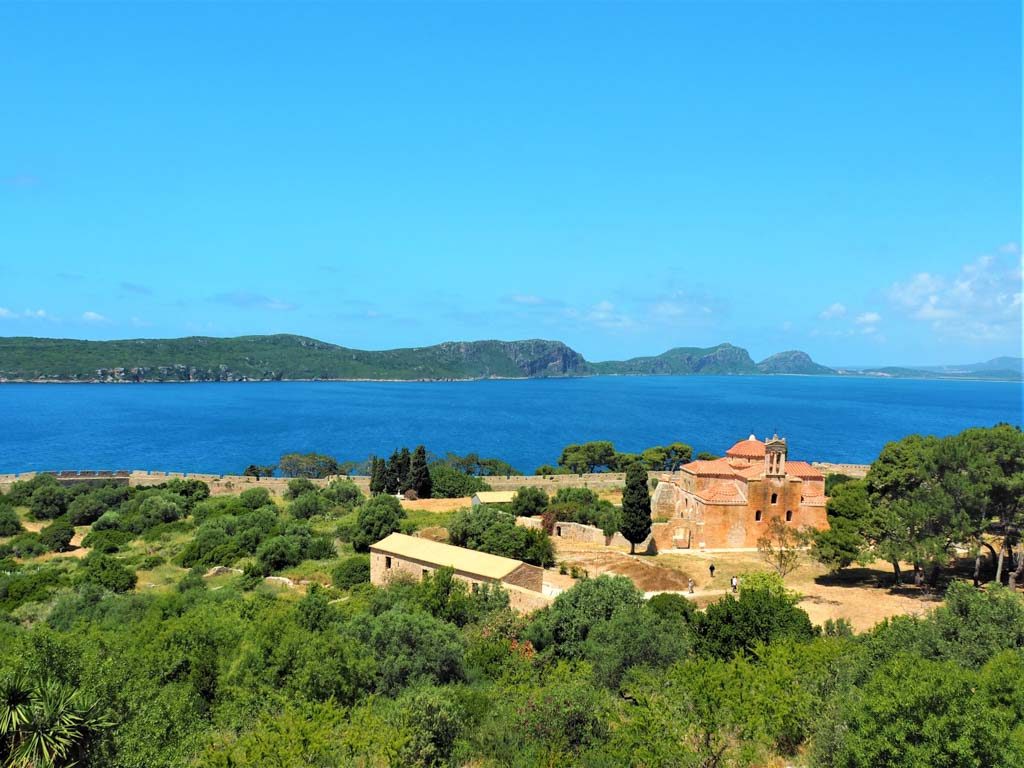
Ancient Messene is somehow among the lesser-known sites of the Peloponnese. In fact, Messene is as grand as it is underrated – a fantastic sight that is somehow still under the radar for many. This extensive city of the Classical era (4th century BC) remains wonderfully intact.
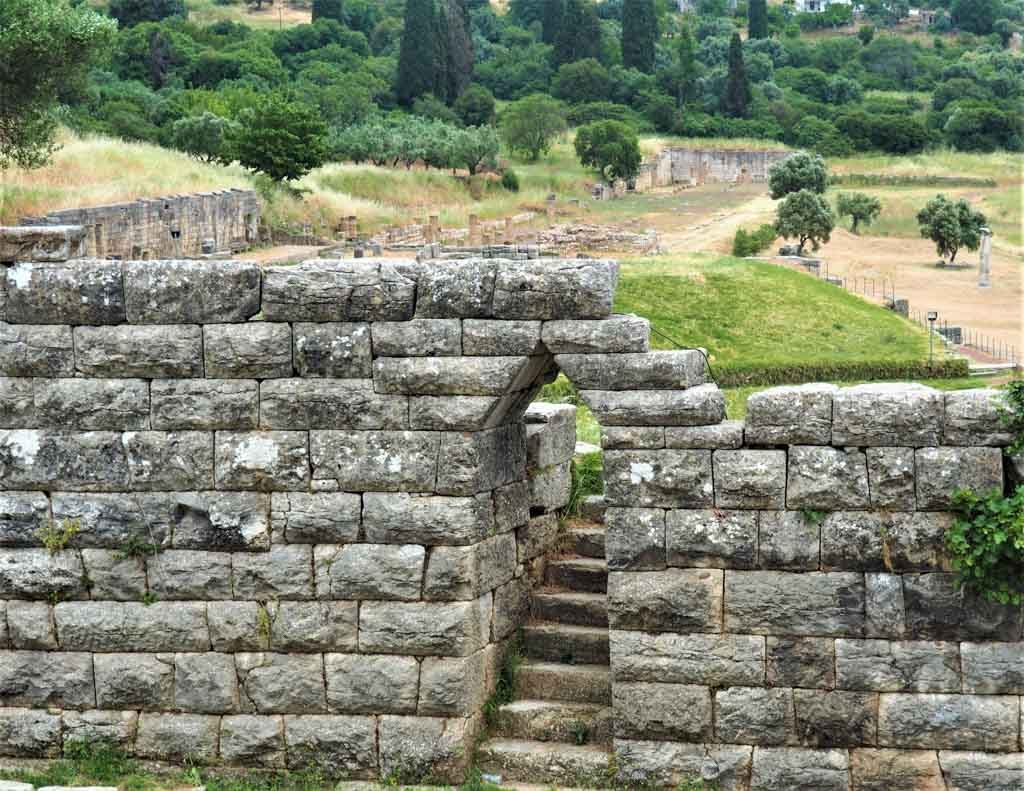
General Epaminondas of Thebes built the great city for the exiled Messenians to return finally to their homeland, after years of Spartan domination were brought to an end at the 371 battle of Leuctra. The city was surrounded by 9 kilometers of walls some 7 to 9 meters in height. It encompassed an agora, sanctuaries, a fountain house, a stadium, a large theater, and funerary monuments. Findings from the vast excavation are housed in the museum of Ancient Messene.
What is very special about ancient Messene is that it affords the opportunity to immerse oneself in the world of ancient Greece. It is not merely the wealth of ruins, but their relationship to one another that give the visitor a unique experience of the ancient world. The city plan is the work of Hippodamus, the great architect and urban planner of Ancient Greece. In ancient Messene, one sees the logical grid plan with well-defined public spaces in a central space, surrounded by grids of residential areas – very much the model of the modern city, based on the original vision of Hippodamus.
Skaros, Ios
Ios is known to be one of the most beautiful of the Cycladic islands. A sociable island, it’s known for both the exciting nightlife on offer as well as some beaches known worldwide for their beauty. Divers also love this island.
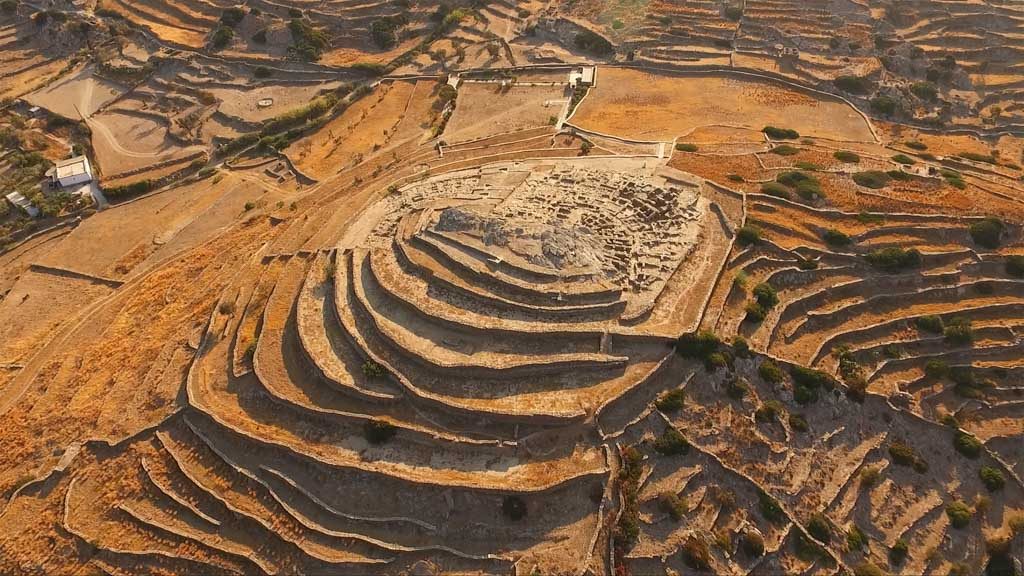
In short, this is not an island associated so much with archaeology and the world of ancient Greece – with the exception of Homer, said to be buried here – as it is with more contemporary pleasures and natural beauty. Which is what makes Skaros such an interesting and perhaps also unexpected feature of a visit to Ios.
Skaros is one of the best preserved prehistoric sites of the Aegean. Ios had a well-sheltered natural harbor, but that is not where the ancient inhabitants chose to settle. Rather, they chose a dramatic site inland, amid fertile fields, with proximity to the harbor. The site itself is drastically terraced, with these terraces following the natural rise of a hill.
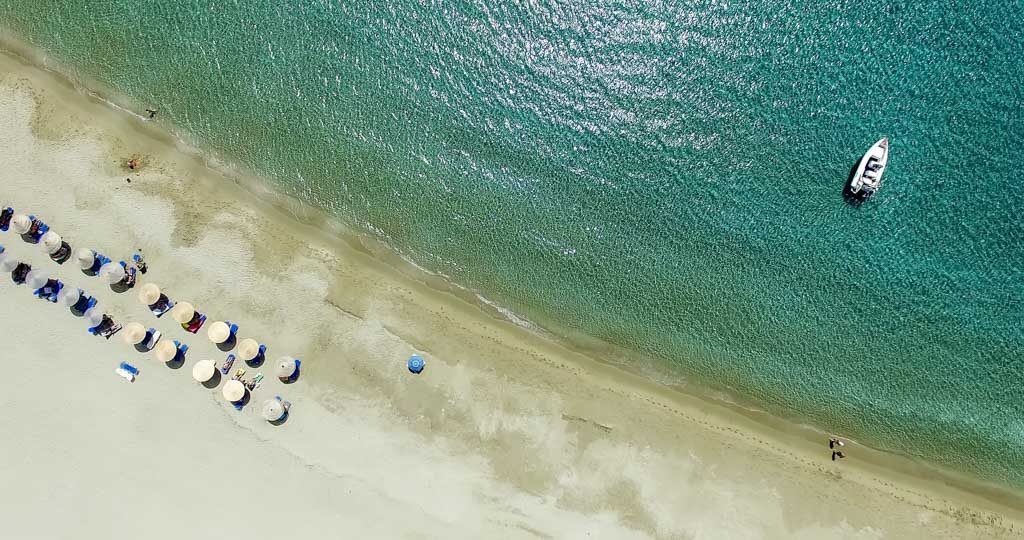
Skaros is another “recent” ancient site, its excavations having been carried out at the end of the 20th century. These excavations brought to light a thriving Cycladic Bronze Age culture from the middle of the 3rd millennium BC. Findings include figurines, amphorae, ceramics, and objects of volcanic glass (obsidian). The Archaeological Museum in Chora Ios displays the finds. Some 200 to 300 people lived here, in dwellings of two stories.
The site only opened after conservation works carried out ending in 2007 – Skaros has won a top prize for conservation, owing to its minimal intervention, which allows for a full appreciation for the majesty of its unique landscape.
We hope that this article inspires you to discover the lesser-known ancient sites of Greece.

